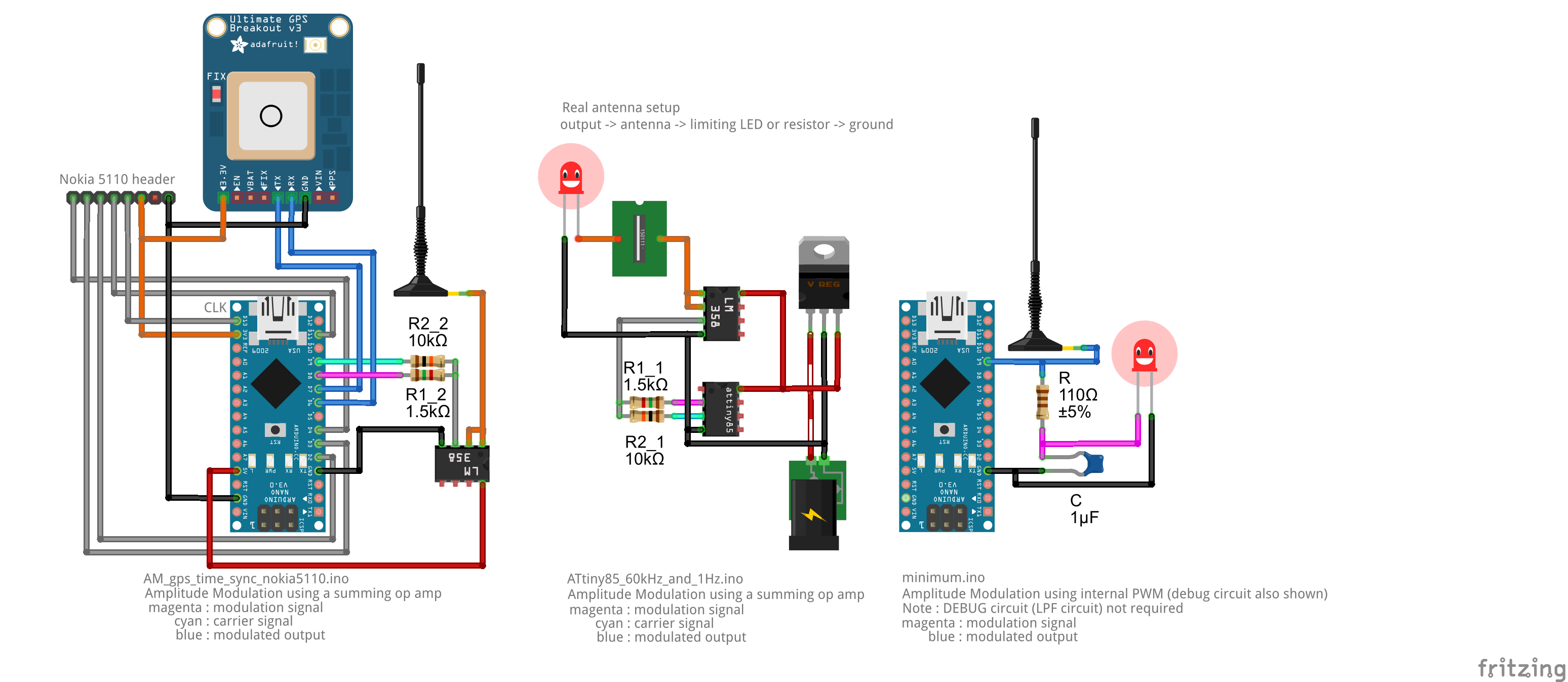02/05/2017 - Tx example now working! But its kinda useless as no sync examples are provided yet (put it in my TODO list)
An Arduino based WWVB & JJY transmitter for ATmega328p and ATmega32u4 based Arduino boards Works with 16MHz or 8MHz boards
- Author/s: Mark Cooke, Martin Sniedze
- @micooke : Software
- @mr-sneezy : Hardware
Note: the following #define's must come in your .ino file prior to including [wwvb_jjy.h] (https://github.com/micooke/wwvb_jjy/blob/master/wwvb_jjy.h)
- Normally the inbuilt LED is flashed along with the modulation.
#define WWVB_JJY_PULSE_LED 0will disable it #define WWVB_JJY_PWM: PAM method outputs a CW carrier and a modulation signal on two separate pins- (default) : PWM method sets the duty cycle of the carrier to 0 for signal low. the modulation signal is still output (incase you want a blinky light?)
http://www.nist.gov/pml/div688/grp40/wwvb.cfm
WWVB: 60kHz carrier, Amplitude modulated to Vp -17dB for signal low
http://jjy.nict.go.jp/jjy/trans/index-e.html
JJY: 40kHz carrier, Amplitude modulated to Vp -17dB for signal low (same as WWVB)
JJY is inverted compared to WWVB. At the start of a pulse it is HIGH (WWVB starts low) and the time at which it goes LOW determines the code type.
As explained in : https://en.wikipedia.org/wiki/JJY
There are three different signals that are sent each second:
- 0 bits consist of 0.8 s of full power, followed by 0.2 s of reduced power.
- 1 bits consist of 0.5 s of full power, followed by 0.5 s of reduced power.
- Marker bits consist of 0.2 s of full power, followed by 0.8 s of reduced power.
- Tx example - static time set, non-syncing examples
- Rx example - receives the modulation pin to decode your timecode for debug purposes
